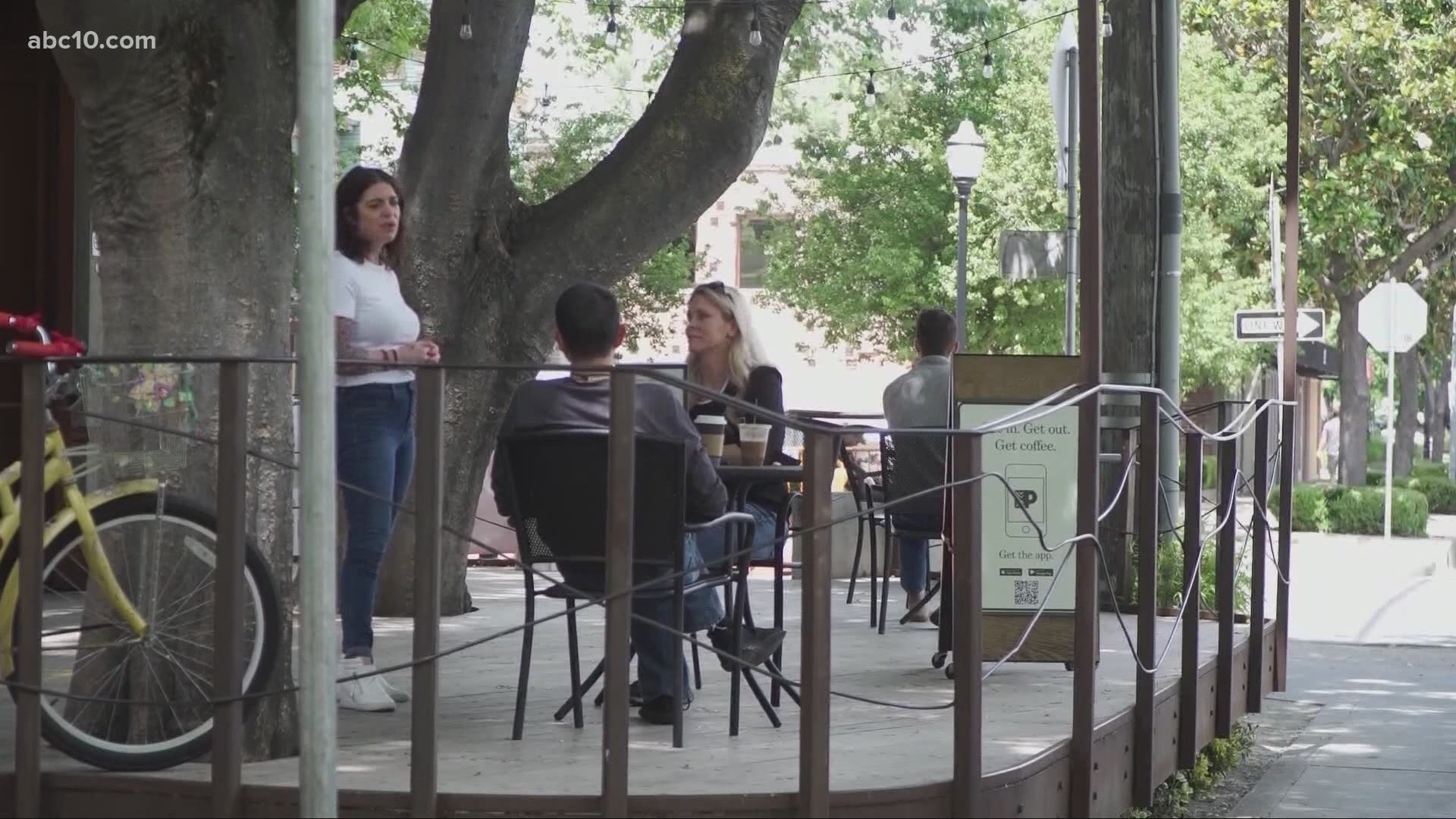SACRAMENTO, California — The California Department of Public Health (CDPH) has issued new guidelines for wearing face masks. The new guidance requires wearing a face mask "at all times when outside of the home."
"The use of face coverings by everyone can limit the release of infected droplets when talking, coughing, sneezing, singing, exercising, shouting, or other forms of increased respiration, and they can also reinforce physical distancing by signaling the need to remain apart," CDPH said.
The mask update does not substitute for existing guidance about physical distancing and hand hygiene, according to CDPH.
There are few exemptions to the new rule in certain situations:
- Persons in a car alone or solely with members of their own household.
- Persons who are working in an office or in a room alone.
- Persons who are actively eating or drinking provided that they are able to maintain a distance of at least six feet away from persons who are not members of the same household or residence.
- Persons who are outdoors and maintaining at least 6 feet of social distancing from others not in their household. Such persons must have a face covering with them at all times and must put it on if they are within 6 feet of others who are not in their household.
- Persons who are obtaining a service involving the nose or face for which temporary removal of the face covering is necessary to perform the service.
- Workers who are required to wear respiratory protection.
- Persons who are specifically exempted from wearing face coverings by other CDPH guidance.
Some people are exempt from wearing wearing a mask at all times, CDPH said.
- Persons younger than two years old. These very young children must not wear a face covering because of the risk of suffocation.
- Persons with a medical condition, mental health condition, or disability that prevents wearing a face covering. This includes persons with a medical condition for whom wearing a face covering could obstruct breathing or who are unconscious, incapacitated, or otherwise unable to remove a face covering without assistance. Such conditions are rare.
- Persons who are hearing impaired, or communicating with a person who is hearing impaired, where the ability to see the mouth is essential for communication.
- Persons for whom wearing a face covering would create a risk to the person related to their work, as determined by local, state, or federal regulators or workplace safety guidelines.
CDPH said those who are exempted from wearing a face covering due to a medical condition who are employed in a job involving regular contact with others must wear a non-restrictive alternative, such as a face shield with a drape on the bottom edge, as long as their condition permits it.
Read more from ABC10
ABC10: Watch, Download, Read



















